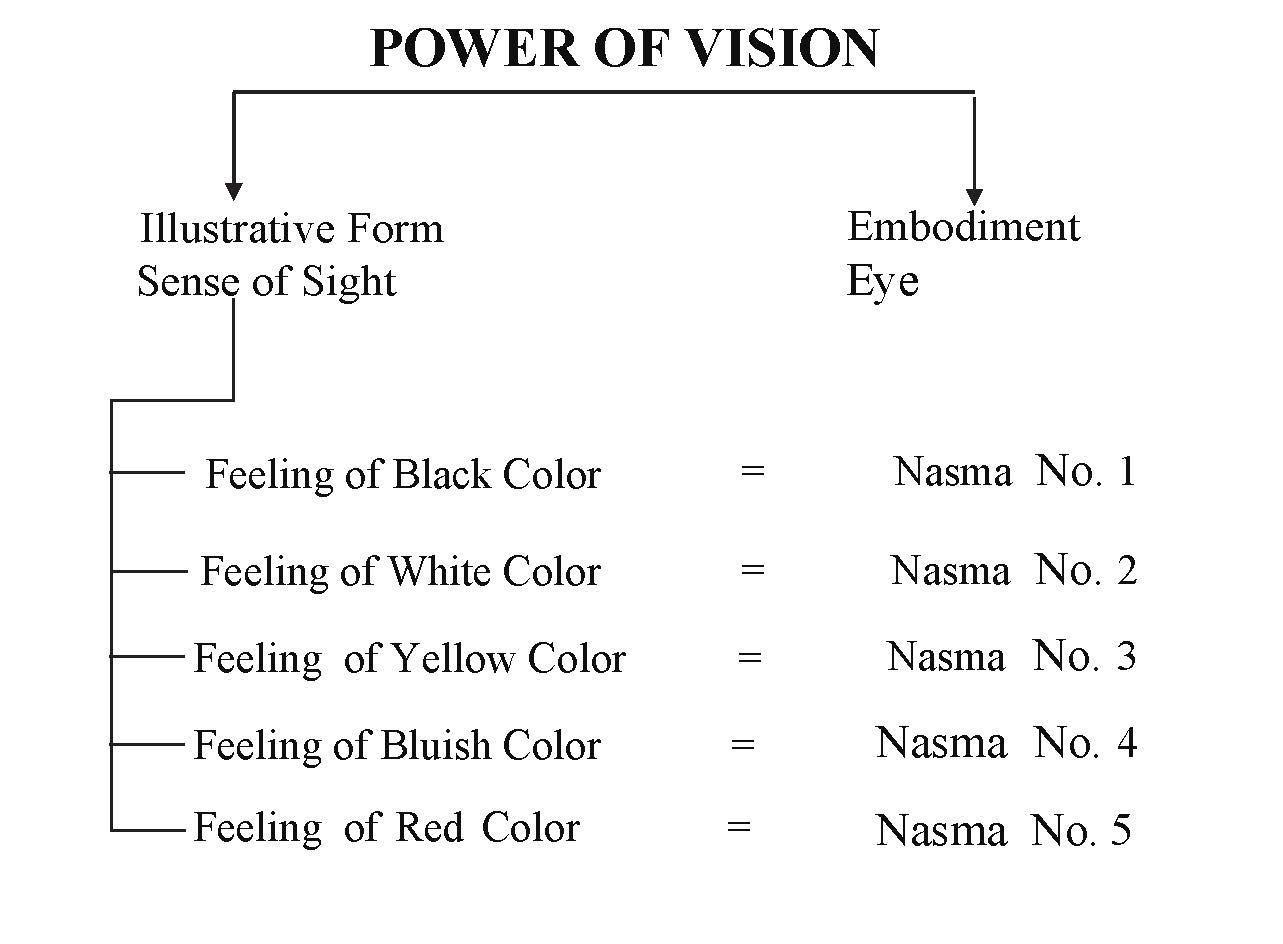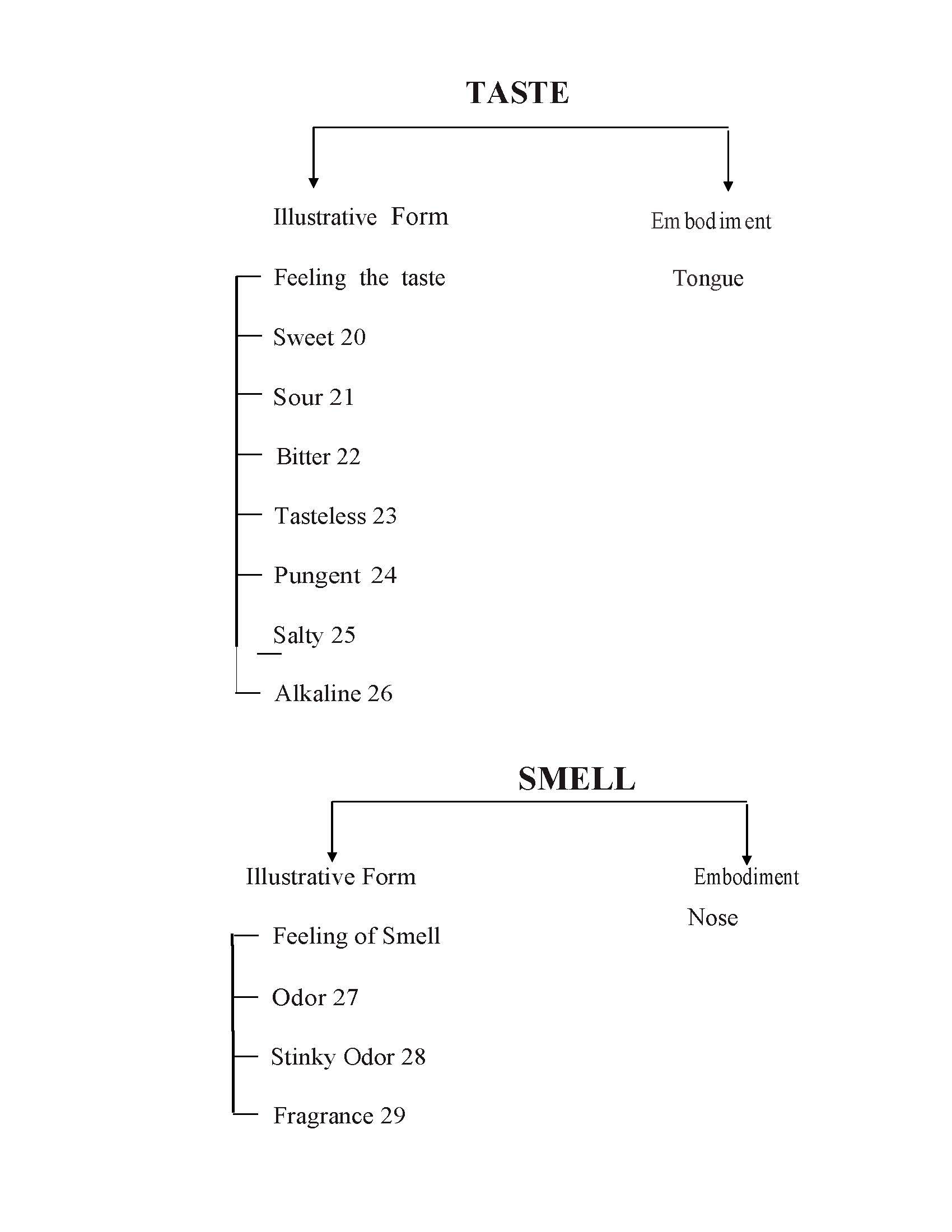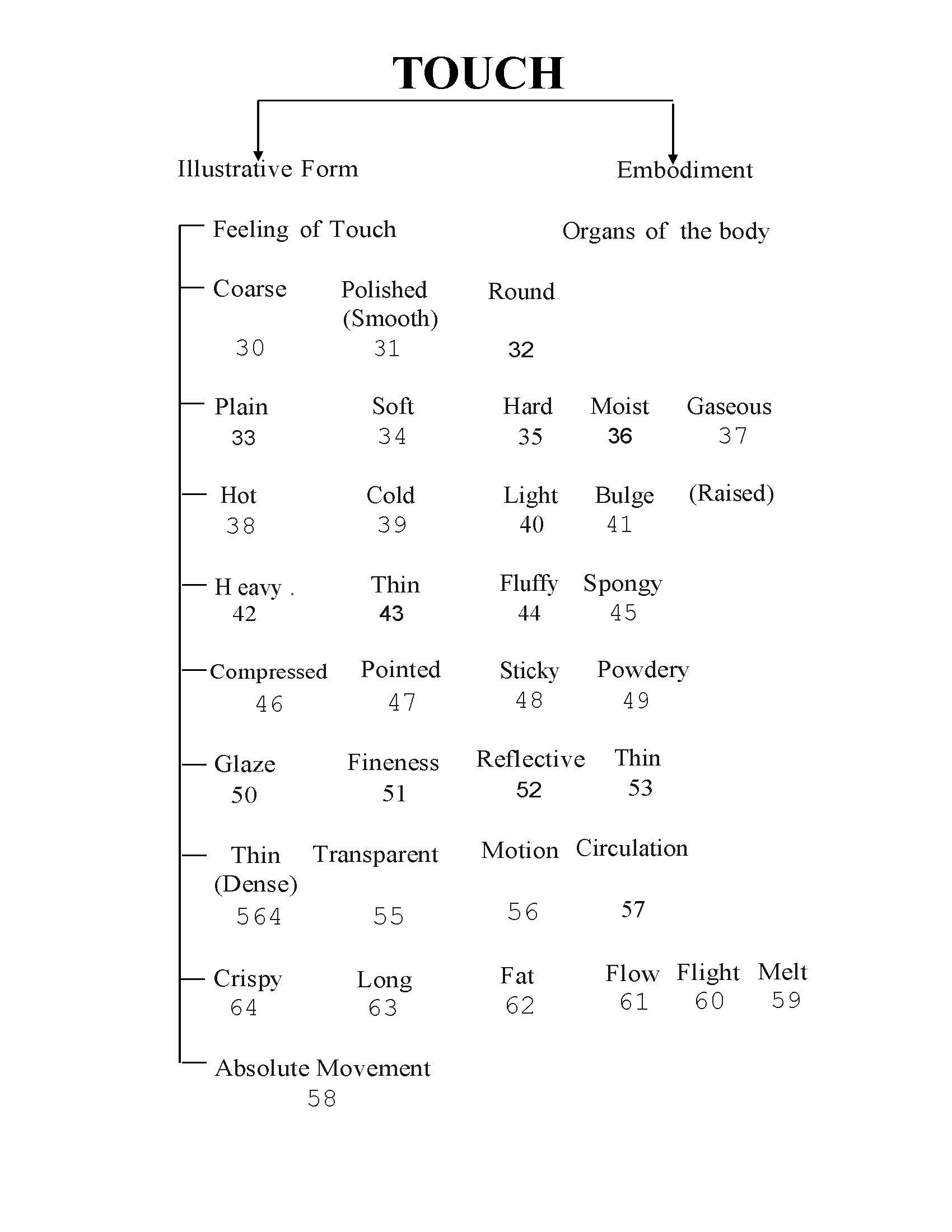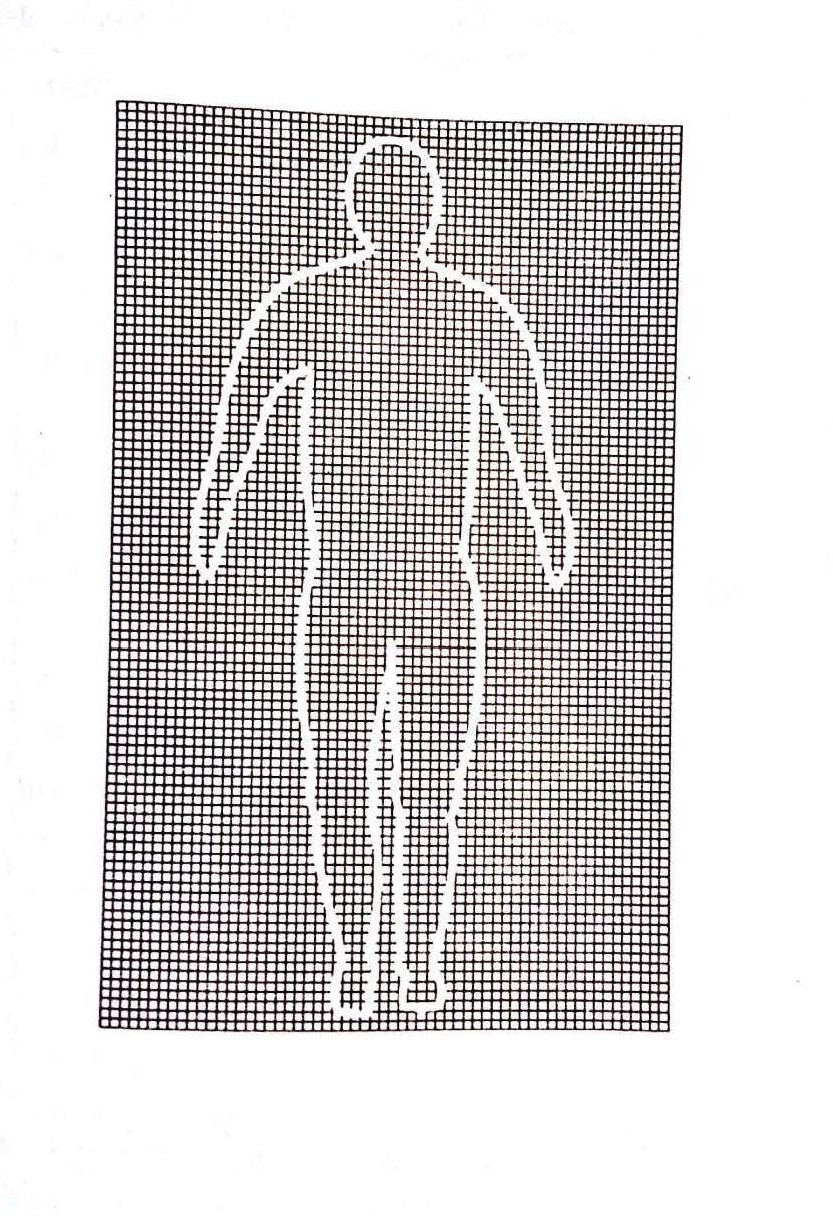Topics
Nasma = Observed + Light (Noor) ;and
Noor (Light) = Observer + Observed



Examples:-

Collectively and achieves its goals, It becomes the Compound Form, or so to say, the Simple Form is the initial state and the final state is the Compound State. The initial State can only be observes by the Spiritual Eye and the final state is seen by the Physical eyes.
We
can now form some idea, from the above table, about the accumulation and assembly
of Nasma and its various stages in this regard.
Be
it known that the thing named sense or Feeling has two components which could be
called its two sides. Anything which has a material body, has both these sides adjacently
connected with each other. According to general doctrines, an object is considered
to be the collection of these two sides. Same is the Law of the preserves Scripturum.
Anything, whether material or abstract, corporal or incorporeal, anyhow, has to
follow this Law. Both the sides are inevitably found in everything. For corporeal
objects this can be observed clearly. We may not be able to observe this thing in
incorporeal objects by the physical eyes but still the fact remains the same and
it cannot be anything other than this. Therefore, somehow or the other, when incorporeal
things are observed this Law is found to be valid there all the same. Both the sides
are adheringly joined in incorporeal objects. No matter what the mode of adherence
is. According to the same Law, Sense or feeling also have these two sides or aspects.
One of the sides or aspects is that one where the Power of Observation exists and experiences the feeling, while the second side lies where the Power of Observation is focused, that is, where the sense of feeling is focused.
According
to the Law of Preserve Scripturum, both these aspects jointly form a function or
an order of a structure and are considered to be single entity. For instance, we
see the black color of a black-board.
This
could be analysed as under:-
Black-board
= Nasma Nos. 1 + 32 + 35
Black
color of the board, in this example, is one aspect of the sense and the sensation
felt by the viewing eyes is the second aspect of the sense. Thus, both these aspects
combinatively act as a function, order or movement of a specific form. Unification
of these aspects, in Sufism, is termed as llustartive form’ (Tamasl). As if it is
a figure in which both the aspects along with their complete characteristics have
united together. Observations confirm that nothing, corporeal or incorporal, could
be without a form and figure because existence without anything without form and
figure is actually not possible. The being which is created because of the unification
of the forms and figures of the two aspects, in Sufistic language, is known as ‘Illustrative
Form’ (Tamasl). Although it cannot be seen by the physical eyes, the spiritual eye
witnesses it just as a material form and figure is viewed and felt by the physical
eyes.
Just
like the body, the the Illustration (Tamasl) too, has dimensions. Not only the length
and width of these dimensions is observed by the spiritual eye, the effect of space
occupation exercise by these dimensions is also felt by it. Sufis call this very
Illustration by the name of Hiola (silhouette). In fact, it is a frame of sensations
in which all those ingredients and components are present which after advancing
one step is seen by the physical eyes and is felt by the physical touch.
Existence
of something takes its shape initially in the form of Illustration or a Silhouetter
which is the compositional formation of the Simple Nasma. When in the second phase
the Simple Nasma adopts the shape of the Compunded Nasma its movements are extremely
slackened and sluggish. this very sluggishness and state of inertness is named as
‘the Solid Sense’.
Two
types of Nasma; simple and compound, have been mentioned above. A brief explanation
of the same will not be out of place. in fact, the simple Nasma is a collection
of those movements which are following unidirectionally; from one side to the other
only. The movement of Nasma upto a specific descent remains in a simple form. This
state or descent is just like curtain which is formed by the unidirectionally flowing
colorless rays. These colorless rays are the lines of movement which are just like
the threads of warp of fabric run separately but are attached with one another all
the same. As long as the ‘fabric’ remains in this simple state i. e without the
weft, it represents the state of the simple Nasma. All the impressions, patterns
or designs incorporated in this state of the fabric would be termed as Jinns and
The World of The Jinns.
But when this ‘cloth’ enters into the limits of that descent where another movement, having an altogether differently directed flow, infuses the first movement like the weft of a fabric and diversified patterns and designs are formed because of interweaving of these movements then these patterns and designs are named as, Man and the World of Man. Or so to say the simple Nasma or the singular movement is the world of Jinns and the Compounded Nasma of the Complex Movement is the World of Man. That which we have called ‘Movement’ is the same ‘Sensation’ of that silhouette (Hiola) which has been mentioned above by the name of Illustration (Tamasl). As long as this movement remains within as imperceptible sphere it is called Illustration and when it comes in the paramenrer of the perceptible

Jinn of the world of Jinns – Simple Nasma
or the Simple Movement

Man of the world of Man – Compounded Nasma
or the Complex Movement
sphere it is named as Body. The same Body is termed
as the Solid Materiality.
We
have drawn, in the preceding page, a graphic figure of a fictious jinn and man.
If the said figures are carefully studied, it will give us the idea that the lines
running from one direction to another are actually representing the movements. Only
the varying lengths of these movements produce all types if characteristics and
qualities i. e movement of a specific length has certain fixed properties. The units
of length determining any particular property according to the laws of the Preserved
Scripturum, are the fundamental bases for any pattern, design and formation. Every
thing existing in the universe, every property color form and figure has a fixed
and specific length of movement. Observations verify that if the magnitude of movement
is ‘x’ then a manifestation, being a product of this measure of movement, will always
be formed on the same pattern and style. The shape and color dimensions and properties
of this manifestation will always be found fixed and predetermined, nothing could
either be added not subtracted from it. And, a particular combination of these movements
results in the form of an individual of a particular species, whether that is a
species if the intimate minerals, plant of animal kingdoms of the Man’s World or
is one of the tripartite of the World of jinns. In the first case, it will be the
outcome of the Compound Nasma i. e, two oppositely directed movements, which could
be termed as the Dual Motion. And in the second case it will be an outcome of the
unidirectional movement which could be termed as Singular Motion.
It
has been stated in the Holy Quran by Allah, the Most High, that every thing has
been created by Him in duality.
“And
of every thing We have created in twos (pairs), so that ye may receive instructions”.
(Surah, LI Verse 49)
Here,
it is necessary to understand the characteristic of duality in the creation of the
Motion or Movement. For the analysis of this characteristic we have to properly
know the ‘Feeling’ or ‘Sense’. In the example of the black-board both the aspects
of the Sense have been mentioned and actually both these aspects are to be discussed
here.
That
which is called movement is merely a sense whose one side is in the outward direction
and the other is the inward direction. When a pattern of a particular combination
is formed in the Nasma it becomes the collection of such movements which on one
hand are the sensation of the pattern itself and on the other hand the sensation
of the World related to that pattern.
It
could be explained thus that which is called the ‘External Self’ (Zahir- ul- Wajood)
by the Sufis comprises two stages. One of them has no dimensions and the other,
where the designs and patterns of the first stage appear with dimensions. But, upon
this stage, only the physical properties are found, functionality of the disposition
is not there. Religion has named the first stage, as the Realm of the Soul and the
components of this realm are called the soul. Second stage is the Illustration Realm
and technically every component of this realm is named as Temsal (Illustration).
Both these stages have the same difference as stated above.
KHWAJA SHAMS-UD-DEEN AZEEMI
Alshaikh Khwaja
Shamsuddin Azeemi, Chief Editor of the monthly Roohani Digest, the renowned
spiritual scholar, founder of the chain of Muraqba Halls the world over has had
the honour of learning the spiritual sciences from his spiritual mentor, His
Divine Grace Qalander Baba Auliya, the sage of this age. In order to teach him
the spiritual sciences Qalander Baba Auliya made Alshaikh Azeemi to pen down
the words that he used to narrate. Alshaikh Azeemi being a devoted disciple not
only noted the contents but also did his best to understand what he was taught.
The eventual out come of his dedicated work took the form of the ‘Loh-o-Qalum’,
the first ever book that comprises the whole syllabus of the spiritual science.
Who else was more suitable to explain the contents of this document but
Alshaikh Azeemi, the very able student of Qalander Baba Auliya. Dissemination
of that knowledge, which is the legacy of prophets and had reached him in
disciplic succession, has become an obsession for Alshaikh Azeemi because, according
to him, this knowledge is the only elixir and the antidote for the ailing
humanity in present times.